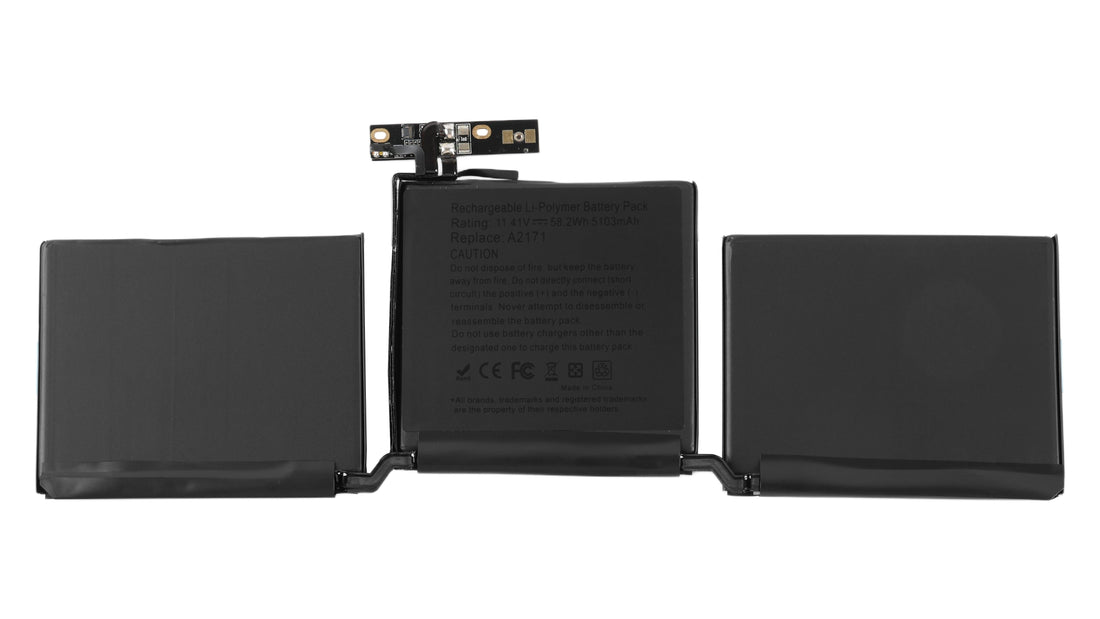
What drains a MacBook's battery fast?
MacBook battery drain is usually the result of a combination of software load, system settings, and battery health. Background apps, high screen brightness, continuous Bluetooth/Wi-Fi signal searching, and battery aging can significantly reduce battery life. For example, if Safari tabs that haven't been closed are playing auto-refresh videos, they can drain more than 15% of the battery per hour. When the battery's maximum capacity falls below 80%, the actual battery life may be only half that of a new battery.
Factors That Cause MacBook Battery to Drain Quickly
Here are some common factors and solutions:
Software and Background Activities
Background running applications and processes are the primary culprits for battery drain. Many users believe that closing a window also quits the program, but the dot below the app icon in the Dock shows that the program is still running.
For instance, video editing software or cloud syncing tools that aren’t properly closed can consume up to several hundred watts of power over 12 hours.
Additionally, poorly coded software or redundant plugins can increase CPU load. Flash Player, for example, was once notorious for being a major battery drain.
System Settings
The screen and peripherals are the primary hardware power drains. For every 10% increase in screen brightness, battery life is shortened by about 30 minutes. Also, the keyboard backlight and connected USB devices, even when idle, consume an extra 5-10% of battery. Bluetooth continuously scans for signals when no devices are connected, draining about 2-3% of battery every hour. Location services and background refresh processes keep waking the system, consuming more power.
Hardware Issues
Excessive battery cycle counts (over 1000 cycles) may cause battery capacity to decrease, reducing battery life. Furthermore, malfunctioning temperature sensors or poor cooling (such as clogged fans or aged thermal paste) can also affect battery performance, causing faster battery drain.
Battery Health and Charging Habits
Natural aging of lithium batteries and improper charging habits are irreversible factors. MacBook batteries are designed to last up to 1000 cycles. When the "maximum capacity" is less than 80% in "System Information > Power," the battery life significantly decreases. Storing the battery at full charge for prolonged periods (such as always keeping the MacBook plugged in) or deep discharges (below 5%) can accelerate aging. Additionally, charging in high-temperature environments (over 35°C) may permanently damage battery capacity.
How to Reduce MacBook Battery Drain Through System Settings
Lower Screen Power Consumption
The screen is one of the most power-hungry components of a MacBook, and optimizing brightness and sleep settings can show immediate improvements. First, enable "Auto-Brightness" (using the ambient light sensor for dynamic adjustment). In indoor settings, it's recommended to set the brightness to below 50%. Each 10% reduction in brightness can extend battery life by about 30 minutes.
Next, reduce display sleep time by going to "System Preferences > Battery > Options" and setting "Turn display off after" to 1-2 minutes. This ensures that the screen backlight turns off automatically even when playing music or other activities that don't need the screen.
Turn Off Idle Functions
Wireless modules and peripherals continuously consume power. Wi-Fi and Bluetooth search for signals even when no device is connected, consuming about 2-3% of battery per hour. You can quickly disable idle Wi-Fi and Bluetooth from the Control Center in the menu bar, or go to "System Preferences > Bluetooth" and uncheck "Show Bluetooth in the menu bar" to prevent accidental activation.
External devices such as USB hard drives, SD cards, and docks consume an additional 5-10% of battery, even when idle. Unplug them when not in use, especially to avoid waking up the system during sleep. If you need to use an external monitor for extended periods, prefer a USB-C port that supports "DisplayPort Alt Mode," which is more power-efficient than traditional HDMI.
Utilize Energy Saver and Low Power Mode
The macOS "Energy Saver" panel is the core for optimizing battery life. In "System Preferences > Battery," configure the following for both battery power and power adapter:
-
Battery Mode: Check "Reduce brightness of built-in display while on battery power" and "Automatically reduce brightness before display goes to sleep," and set the "Computer sleep" time to 5 minutes or less.
-
Power Adapter Mode: You can extend sleep time, but it is recommended to keep "Display sleep" time no longer than 10 minutes to avoid keeping the battery at 100% for long periods.
When battery life is low, enable "Low Power Mode" (check in "System Preferences > Battery"), which will automatically reduce CPU performance, limit background activities, and cut down on visual effects to extend battery life by up to 30%. For long-term use, such as during business trips, create an automation rule in "Shortcuts" to automatically enable Low Power Mode when the battery is near 80% and prevent it from turning off automatically.
Optimize Background Activities and Hardware
Background apps and hardware configuration are invisible battery drains. In "System Preferences > Users & Groups > Login Items," disable unnecessary startup programs (such as redundant cloud sync tools or helper software) to reduce resource consumption during startup.
If your MacBook has a dedicated graphics card (like some MacBook Pro models), ensure that "Automatic Graphics Switching" is enabled (in "System Preferences > Battery > Options"). This will switch to the integrated GPU for tasks like word processing, saving 20-30% more battery.
By applying these settings, a regular MacBook can extend its battery life by 1-2 hours, and even older batteries (with a maximum capacity below 80%) can experience less rapid battery drain.
How long does your MacBook currently last on a full charge?
If you're looking for a reliable and compatible replacement battery for your MacBook, check out the high-quality options available at Applebattery.com
For more expert tips on MacBook battery replacement, calibration, or troubleshooting, visit applebattery.com/zh-hans/blogs/support for comprehensive guides and resources to ensure your MacBook runs smoothly and efficiently.
